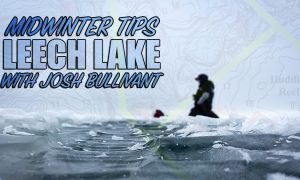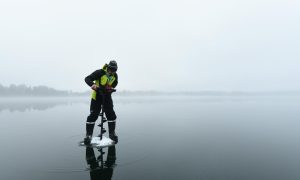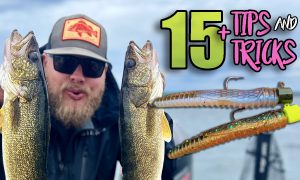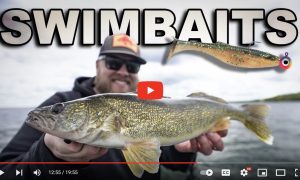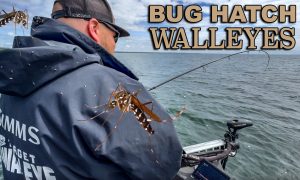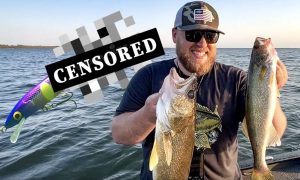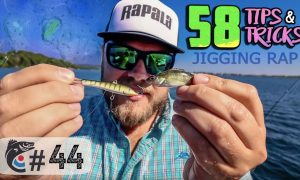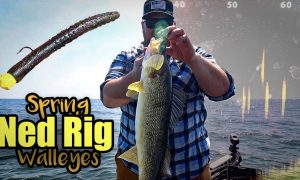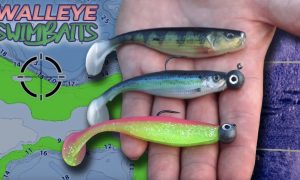Are you Shivering yet?
Definitely not from the cold…. This juicy, throwback write-up from The Next Bite TV talks about Moonshine Shiver Minnow SZN, and how they basically bowhunt for walleyes…one rod, one lure, searching for big fish with their electronics before taking their shot:
> …used to switch between Berkley FireLine and Berkley Nanofil…but now we all agree: The new[er] Berkley FireLine Ultra-8 Carrier is a mix of the 2 lines with the smoothness of Nanofil due to the 4 extra carriers and the abrasion resistance and strength of the original FireLine braid.
> In most walleye situations we use 10-lb, but moving up to 14-lb is sometimes necessary for heavy cover, zebra mussels or bigger fish.
> Berkley 100% Fluorocarbon leader material in 10-, 12- or 15-lb makes a great connection between the braid and lure. 24″ of fluorocarbon is generally enough even in clear water and greatly reduces the number of times the leader knot goes through the guides of the rod.
> The combination of braid and fluorocarbon creates an ultra-sensitive connection between the rod and lure so the angler can sense every change in bottom composition as well as every bite.
> The weakness in this system is that the no-stretch line and heavy lure give…no room for error when fighting a big fish. In this case we change out…with a larger #6 Berkley Fusion19 Treble Hook for better hooking….
> If the boat driver finds a mark and wants to cast keep an eye on the orientation of the boat, wind, and fish. Since it is common to be well offshore, it can help to watch bubbles or a specific spot in the wake of the boat while the driver maneuvers.
> After the lure hits the bottom, jig it up and immediately give the lure some slack. Keeping tension on the lure will reduce the side-to-side action that makes Shiver Minnows special…makes a huge difference in the number of bites.
> …the right motion creates a loop of line near the rod tip and involves a solid snap at the beginning of the stroke. Similarly, if the lake bottom is covered in moss, algae, or mussels timing your jigging stroke to stay above the bottom increases bites over time.
> Vary the height and number of jig strokes before letting the lure crash back down to the bottom. Many times, larger jumps will trigger fish but just as often this will pull the lure out of the strike zone. At the same time, fish occasionally suspend off the bottom and a larger stroke attracts their interest. Work both ends of the spectrum until a trend emerges.
Keep reading the full Next Bite write-up here.


